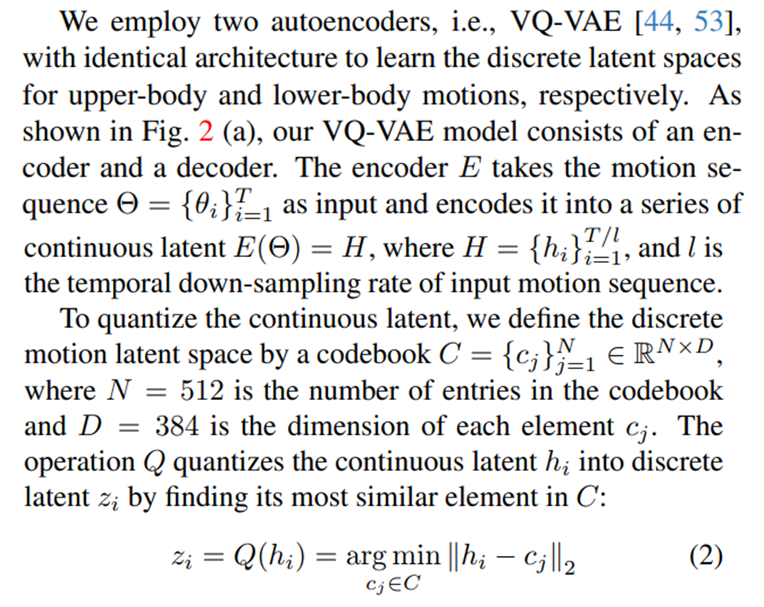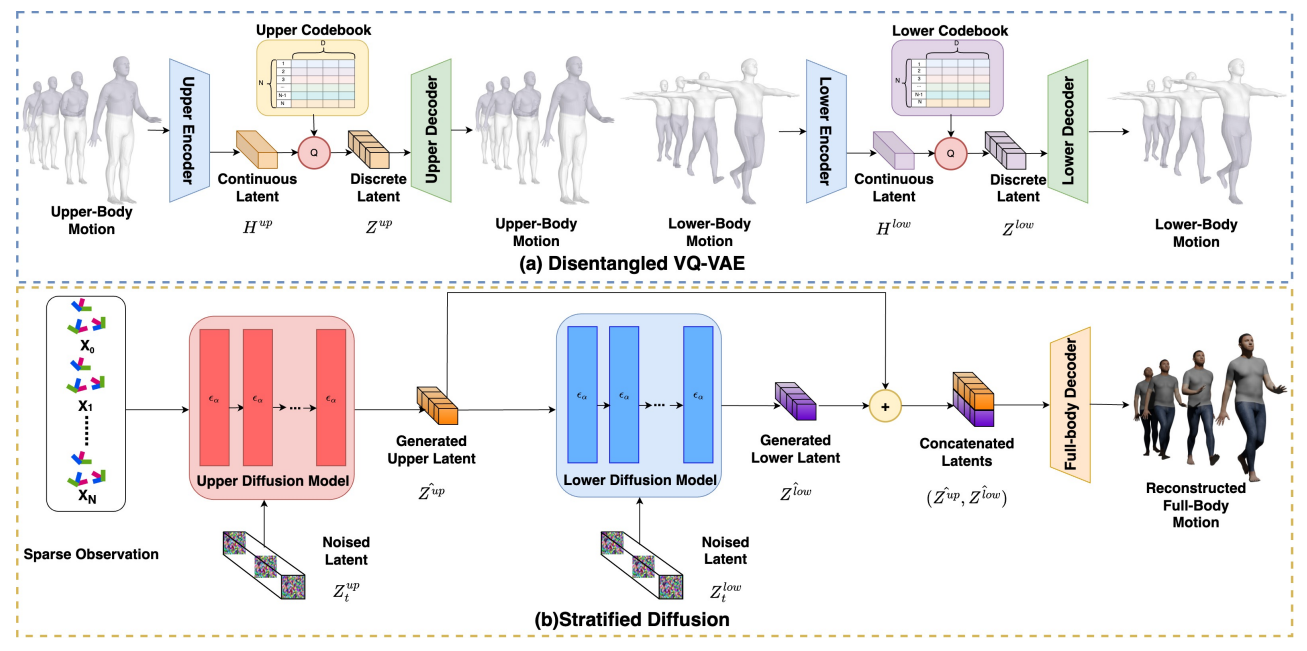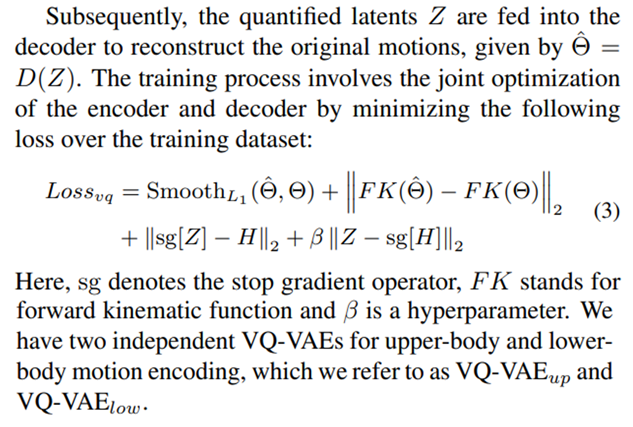This content originally appeared on HackerNoon and was authored by Zaddy
Table of Links
Related Work
SAGE: Stratified Avatar Generation and 3.1. Problem Statement and Notation
3.2. Disentangled Motion Representation
Experiments and Evaluation Metrics
4.1. Dataset and Evaluation Metrics
\ Supplementary Material
3.2. Disentangled Motion Representation
In this section, our objective is to disentangle full-body human motions into upper-body and lower-body parts and encode them to discrete latent spaces. This can effectively reduce the complexity and burden of encoding since each encoding takes care of only half-body motions.
\

\

\ Since continuous latent from all data samples share the same codebook C, all the real motions in the training set could be expressed by a finite number of bases in latent space.
\

\
:::info Authors:
(1) Han Feng, equal contributions, ordered by alphabet from Wuhan University;
(2) Wenchao Ma, equal contributions, ordered by alphabet from Pennsylvania State University;
(3) Quankai Gao, University of Southern California;
(4) Xianwei Zheng, Wuhan University;
(5) Nan Xue, Ant Group (xuenan@ieee.org);
(6) Huijuan Xu, Pennsylvania State University.
:::
:::info This paper is available on arxiv under CC BY 4.0 DEED license.
:::
\
This content originally appeared on HackerNoon and was authored by Zaddy
Zaddy | Sciencx (2025-10-22T15:55:14+00:00) Disentangled Motion Representation: Encoding Full-Body Avatars into Discrete Latent Spaces. Retrieved from https://www.scien.cx/2025/10/22/disentangled-motion-representation-encoding-full-body-avatars-into-discrete-latent-spaces/
Please log in to upload a file.
There are no updates yet.
Click the Upload button above to add an update.
